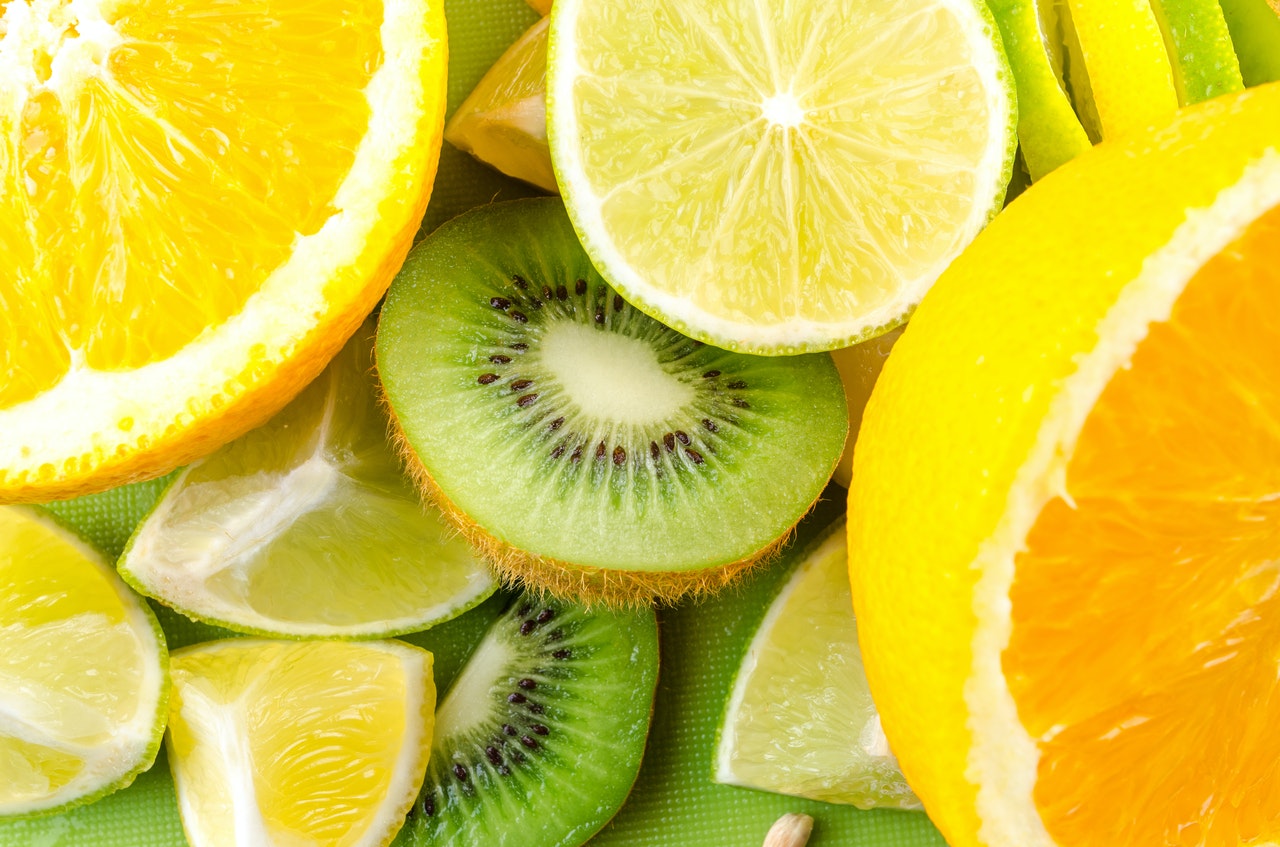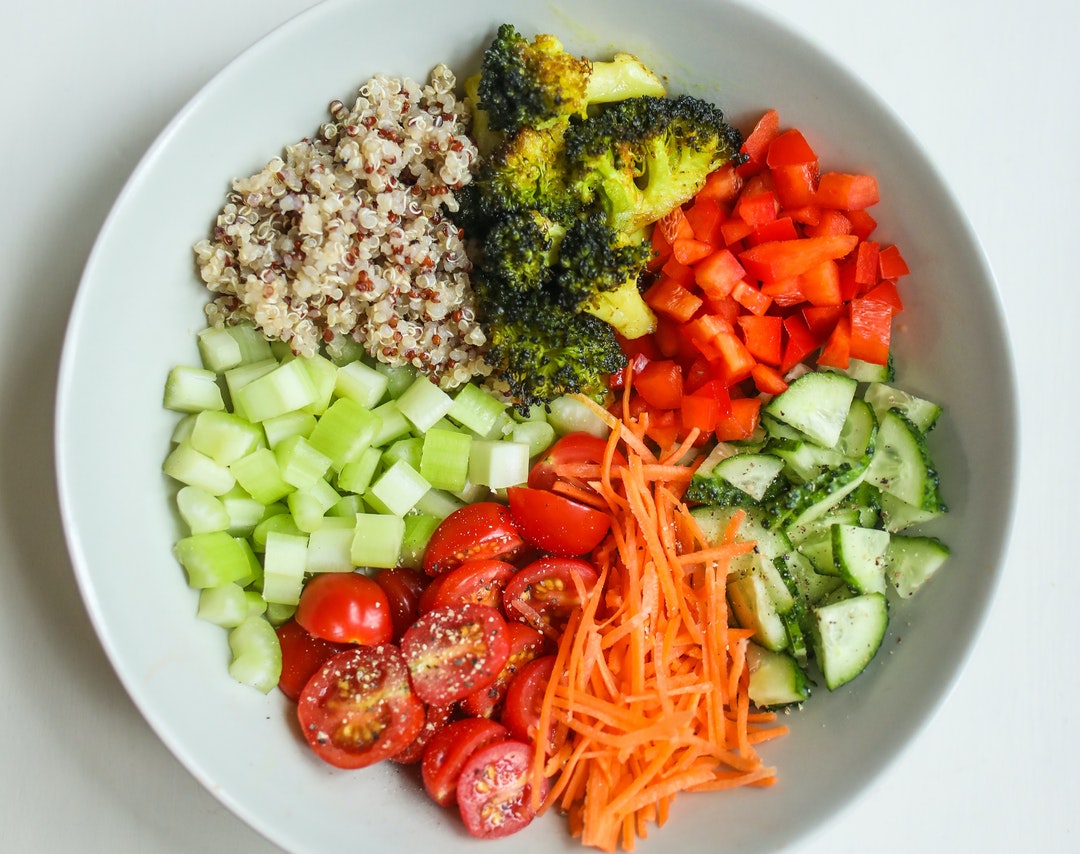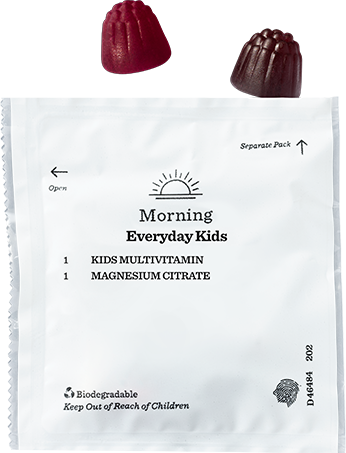Written by Our Medical Advisory Board
Keep your family healthy as your kids head back to class
After months stuck at home, kids across the country are finally heading back to class. Busy lunchrooms, classrooms, bathrooms, and busses will expose them to pathogens old and new—just as they’re taking on the stressors that come with full-time school. And if your kids get sick, the whole household is put at risk.
So, what can parents do? It turns out: A lot. Persona’s Medical Advisory Board, a team of nine leading experts from across the U.S, have put together a list of simple steps you can take to keep your loved ones well in the face of a taxing back-to-school season.
No. 1 – Sleep: the miracle cure
Sleep is like a free nightly tune-up for your child’s body and mind. Disrupting that tune-up can lead to a host of problems, from memory and behavioral issues to weight gain—and it can also impair their immune system.
To keep your child’s defenses at full power, help them get a solid night’s sleep every night. That means 9-12 hours for kids 6-12, and 8-10 hours for teens—starting at a regular time (and no, “catching up” on the weekend doesn’t work perfectly). So how do you make regular sleep happen? By practicing good sleep hygiene:
- Set a routine: regular waking time, mealtime, study time and bedtime.
- Get moving: Help your child get plenty of exercise—outdoors if possible.
- Hold the phones: Turn off all screens at least 60 minutes before bedtime.
- Lights out: Create a dim, cool, soothing sleep environment.
- Z’s only: Make the bed a place to sleep, not to work and play.
- Ease into it: Summer skew their schedule? Shift it back in small steps.
- Walk the walk: Model these good habits yourself!
No. 2 – Ease their mind
Chronic stress can weaken your immune system: It thins out your infection-fighting cells, hampers the ones that remain, curbs the signaling molecules that help your body spot invaders, and even decreases the molecules that clean up after the fight.
To keep your kids healthy, watch out for signs of stress: trouble sleeping, loss of appetite, irritability, mood changes and other red flags. If you spot them, take action to ease their minds:
- Shake a leg: Exercise lowers your kids’ stress hormones.
- Write it down: Writing out worries can quiet a buzzing brain.
- Go outside: Get them out in daylight to bump their feel-good dopamine.
- Cuddle someone! Good physical contact is a stress killer.
- Socialize: Hanging with friends helps them unwind.
- Take three deep breaths: It may sound silly, but it works!
No. 3 – Wash those hands
Germs get into your body through your eyes, nose and mouth, so keeping kids’ hands clean is key to keeping them healthy. This means teaching (and reminding) little ones to wash their hands before meals, after going to the bathroom, after blowing their nose and when they return home from school.
Make sure you show them how to do it properly: Wet their hands and apply soap, rub their hands to together vigorously for 20 seconds (front, back and between the fingers), rinse thoroughly and dry. If a favorite song helps them reach that 20-second mark, sing along! And if a good scrub isn’t possible, encourage them to use the hand sanitizer you tucked in their backpack or coat pocket.
No. 4 – Check those shots
Over the past year and a half, public health restrictions have caused a big drop in visits to the doctor’s office, which has in turn made families fall behind on immunization. That gap leaves us all open to old-fashioned invaders like meningitis, measles, tetanus and whooping cough.
Before your kids head back to school, check with your doctor to make sure they’re caught up on their vaccines (including that annual flu shot). We may have forgotten about those old-school illnesses, but they haven’t forgotten about us.
No. 5 – Fuel up at breakfast
Your parents weren’t making it up: Breakfast really is an important meal. Fueling kids up on well-balanced food sets them up for success: better memory, better test scores, better mood, healthier body weight, better overall health—and a stronger immune system.
So what makes a healthy breakfast? A mix of three things: Whole grains to charge their batteries; protein to help them feel full (and keep their blood sugar consistent), and fruits or veggies for added nutrients and fiber. Avoid sugary treats. A few ideas:

No. 6 – Pack a lunch that packs a punch
No single food will optimize your child’s immune system, but a nutrient rich diet will go a long way to curbing obesity, nutrient deficiencies and other health issues over the long term.
As with breakfast, your child’s lunch should include a mix of whole grains, protein, fruits and veggies. Some of the breakfast ideas listed above would do the trick, as would whole grain wraps or sandwiches that include those three key components. Steer clear of prepackaged foods (including granola bars!), since they tend to be loaded with sugar.
If you’re looking to give their immune system a bump, throw in some citrus fruit (a good source of vitamin C), green and orange veggies (beta carotene) or berries (polyphenols), all of which help maintain their body’s defenses.
No. 7 – Water, water every day
Your kids need water to stay healthy. It keeps their blood flowing and gets everything to where it needs to go. If they don’t get enough, it can impact their body’s functions—including their immune system.
For young ones, thirst isn’t always a clear indicator, so how do you know they’re getting enough? Look for the signs of dehydration: fatigue, mood swings and dark urine. If you think they’re low on fluids, tuck an extra water bottle in the lunch bag and encourage them to drink water. Avoid soft drinks, fruit juice, energy drinks and other sugary liquids; they’ll do more harm than good.
No. 8 – Stretch those legs
The connection between exercise and immune health is still being studied, but one thing is certain: kids need to move to stay healthy—and that means at least an hour of moderate to vigorous physical activity each day. How do you help them hit that mark? A few pointers:
- Choose the right place: Take kids to the park, the beach, the YMCA or another environment that makes them want to move.
- Screen out screens: Limit TV, computers, video games and phone time to an hour a day. Use the extra time to get outside.
- Use your weekends: Plan an outdoor activity every weekend—hiking, basketball, volleyball, mountain biking or even a trip to the zoo.
- Ditch your wheels: Leave the car at home whenever you can and walk together to your destination.
- Exercise as a family: Work out at the gym with your teen; play outside with your little ones.
No. 9 – Supplement their diet 1
 Your immune system needs certain nutrients to stay strong, but it’s hard to get them all through your diet—especially if you’re low on veggies. To keep up your family’s defenses, consider enriching your diet with key supplements like vitamin C, vitamin D3, zinc, probiotics and mushroom extracts. Not sure where to start? Check out Persona’s immunity gummies for kids, teens & parents. Or better yet, talk to one of our nutritionists: It’s free!
Your immune system needs certain nutrients to stay strong, but it’s hard to get them all through your diet—especially if you’re low on veggies. To keep up your family’s defenses, consider enriching your diet with key supplements like vitamin C, vitamin D3, zinc, probiotics and mushroom extracts. Not sure where to start? Check out Persona’s immunity gummies for kids, teens & parents. Or better yet, talk to one of our nutritionists: It’s free!
Try our Immune Support Gummies
Our powerful immunity gummies were designed to deliver just the nutrients you and your family need to defend from harmful invaders—in all-natural flavors you’ll love.
LEARN MORE
LEARN MORE
References:
i Benton D, Maconie A, Williams C: The influence of the glycaemic load of breakfast on the behavior of
children in school. Physiology & Behavior 2007;92:717-724.
Ingwersen J, Defeyter M, Kennedy D, et al: A low glycaemic index breakfast cereal preferentially prevents children’s cognitive performance from declining throughout the morning. Appetite 2007;49:240-244.
Farshchi H, Taylor M, Macdonald I: Deleterious effects of omitting breakfast on insulin sensitivity and fasting lipid profiles in healthy lean women. American Journal of Clinical Nutrition 2005;81:388-396.
Mahoney C, Taylor H, Kanarek R, et al: Effect of breakfast composition on cognitive processes in elementary school children. Physiology & Behavior 2005;85:635-645.
Smith A, Clark R, Gallagher J: Breakfast cereal and caffeinated coffee: Effects on working memory, attention, mood, and cardiovascular function. Physiology & Behavior 1999;67:9-17.
Smith A, Bazzoni C, Beale J, et al: High fibre breakfast cereals reduce fatigue. Appetite 2001;37:249-250.
Smith K, Gall S, McNaughton S, et al: Skipping breakfast: Longitudinal associations with cardiometablic risk factors in the Childhood Determinants of Adult Health Study. American Journal of Clinical Nutrition 2010;92:1316-1325.
ii https://www.healthychildren.org/English/healthy-living/fitness/Pages/Making-Fitness-a-Way-of-
Life.aspx
1 These statements have not been evaluated by the Food and Drug Administration. This product is not
intended to diagnose, treat, cure, or prevent any disease. As with any dietary supplement, you should
advise your healthcare practitioner of the use of this product.














